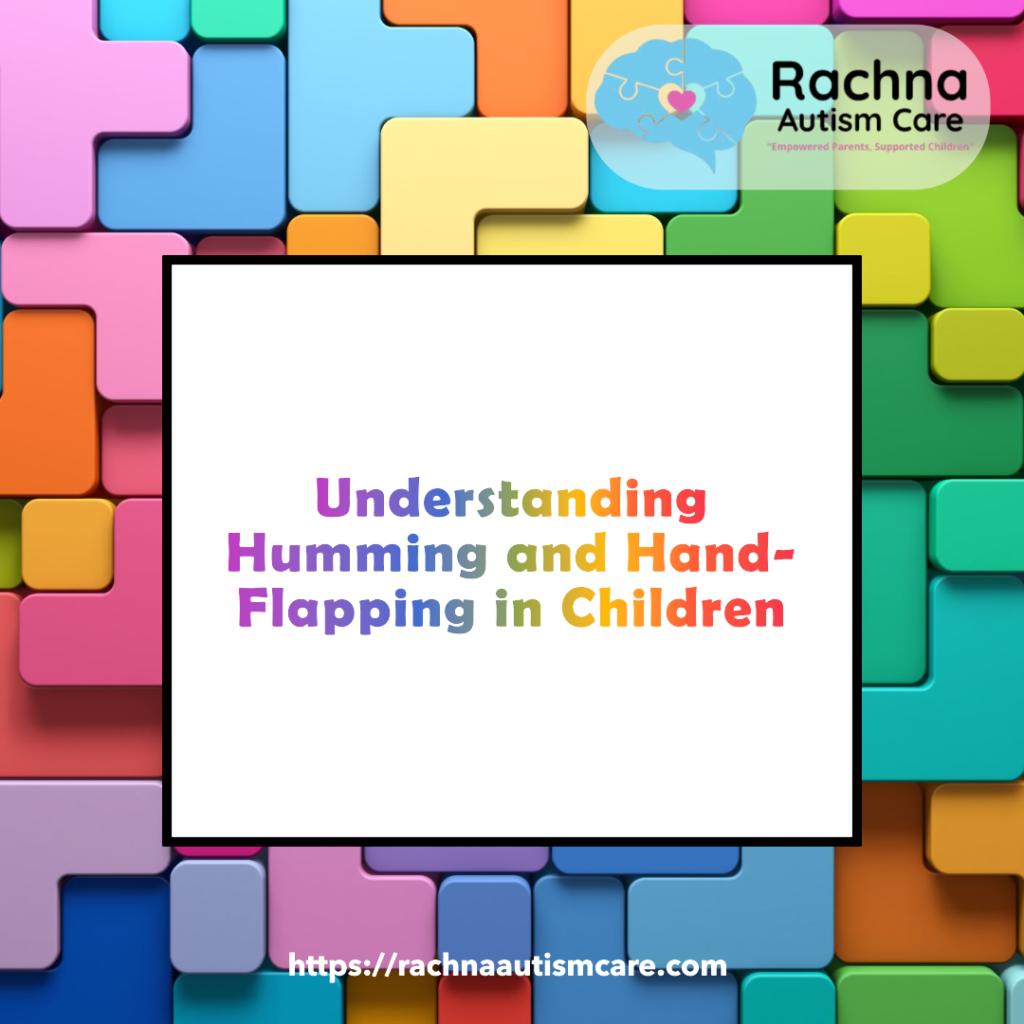Understanding Autism: Humming and Hand-Flapping in Children
If you’re a parent or caregiver of an autistic child, you may have noticed humming or hand-flapping behaviors. The research world has dubbed these “stimming” (shortened terms for self-stimulatory behavior). We’ll explain what it is today, and how you can support your child.
What is Stimming?
Stimming: Stimming is the repeated use of body movements or sounds by an autistic child. The two most common strumming patterns are humming and hand-flapping. To other people, these behaviors can seem strange to an autistic child but have important purposes.
Humming in Autistic Children
Some autistic children hum to themselves at times softly and others more loudly. Humming may be used as a tool for:
- Comfort and self-soothing
- To filter through auditory-overload external noises
- To express emotions such as excitement or nervousness
- Facilitates focus or change over activities
For example, a child might hum as he or she is trying to finish a jigsaw puzzle, thus helping keep his or her attention, or as he or she is entering a very noisy classroom to help regulate his or her sensory shock.
Hand-Flapping in the Autistic Child
Hand-Flapping in Autistic Children is another very common stim. It tends to be very rhythmic, that is, hands fluttering back and forth at eye level. This can be used to:
- Express the fun and joy
- Self-soothe in the stress or as a consequence of becoming overstimulated
- Promote sensory stimulation that the child enjoys
- Be a vehicle for language
Sometimes you will catch your child hand-flapping whenever they become excited over something it’s their favorite toy or perhaps their favorite character on TV.
Understanding Why a Person Stimms
It is important to know that stimming is not something “weird” that a person needs to get rid of. For the autistic individual, stimming serves necessary functions:
- Control of emotions: It regulates anxiety, excitement, or overwhelms
- Sensory processing: It offers your child the sensory input they require or drowns out too much stimulation.
- Communication: This will be an option for communicating emotions or needs when words are not easily found.
- Focus and concentration: It helps your child maintain a focus on things.
Supporting Your Child
The following are things you can do as your child’s parent or caregiver:
- Accept stimming: Take time to realize that these are required behaviors for your child and are doing them good. Do not try to stop or “fix” them unless they harm.
- Provide a safe space: Allow your child to have enough room to stim safely without judgment.
- Learn your child’s stims: Knowing when and why your child stimulates can provide insight into their emotions and needs.
- Give alternatives if needed: If the stim is appropriate but intrusive (for example, humming loudly in a quiet space), you can redirect your child to another alternative that might be more acceptable, like humming softly or using noise-canceling headphones.
- Educate others: Explain to family members, teachers, and peers why your child stims and how they can be supportive.
- Consult professionals: Work with occupational therapists or specialists in autism to develop strategies that will help your child.
When to See a Professional
Most of the time, stimming is harmless and useful. Sometimes, though, it can become problematic. Seek professional help right away if,
- The stims result in physical harm, like head banging
- It interferes significantly with daily routines or educational learning
- Behaviors suddenly alter or peak, which may be symptomatic of related disorders
Remember, no two autistic children are alike. What may work for one will not work for another. Just be patient and observant, and as always, do the needs of your child with love and consideration to it.
Embracing Neurodiversity
Humming and hand-flapping are just two examples of how your child is uniquely themselves, and by learning to see and accept those behaviors, you’re embracing neurodiversity-the concept that neurological difference is a fundamental aspect of human diversity.
Your child with autism humming experiences the world in a unique way. Their stims are just one of the many gorgeous aspects of their neurodivergent experience. With your support and understanding, you can all thrive and express yourself authentically.
You’re doing great. Getting to know your child and being that support is worth so much in their life. Keep learning, be patient, and enjoy the wonderful, unique individual your child is.
